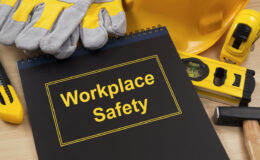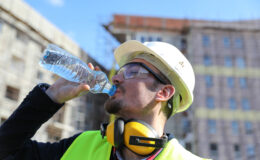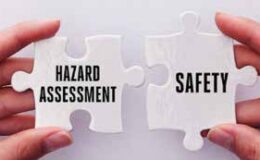By Travis Halsted, Loss Control Consultant
A vast majority of facilities that I visit each year have a welding operation present. Whether it be a large welding area with a plethora of welding cells or a smaller one table welding work station, there are a great deal of potential hazards present whenever welding operations are being completed. This is evident by the $119,803 MTMIC has spent on claims since 2009 that were traced back to welding operations. Of the 82 injuries reported, the injuries range from burns, strains, foreign bodies, inflammation, lacerations, and punctures. As there are a great deal of factors that go into these injuries, one particular item can often be found to be a root cause. In many cases, the lack of proper personal protective equipment was found to play a large role.
Just as in most processes, wearing the proper personal protective equipment is a must. When welding, neither shorts nor short sleeved shirts belong in the welding cell. Even the quickest tack weld requires proper PPE. So what is the necessary PPE for a welder to wear? When welding, only flame-resistant clothing, such as a tightly woven material and/or welding jacket and denim pants should be worn. As one of the largest complaints of prior types of welding jackets was that they were too heavy and cumbersome to wear, it is important to point out that PPE manufacturers are making welding jackets and safety apparel more lightweight. With the new lightweight design, the complaint of the loss of dexterity is no longer a concern. Just as welding jackets have improved, so have welding gloves. There are now different sizes available and a plethora of different types of gloves for the different types of welding operations. With that being said, it is vital to point out that even though an employee may be wearing gloves, caution should always be taken with moving a hot item. The use of tools to move hot items, or waiting for it to cool before transporting by hand is a practice that should be implemented. As we have discussed covering the arms and hands, we must also discuss wearing the right shoes. High-top leather shoes or boots provide the best foot protection. Pants legs should go over the shoes/boots and tennis or cloth shoes should not be worn. Finally, it takes only a moment of exposure to a welding arc’s rays for unprotected eyes to experience “arc flash,” a painful condition that may not appear until hours after the exposure. To protect an employee from a potential “arc flash” it is vital that they have the proper welding helmet. Welding helmets should be fitted with a proper filter shade to protect the operator’s face and eyes when welding or watching. Note that approved safety glasses with side shields and ear protection should also be worn under the helmet. Auto darkening helmets are also a popular choice of helmets for welders. The sensors on an auto-darkening helmet darken the lens in a fraction of a second. Industrial grade helmets react at speeds of 1/10,000 to 1/20,000 of a second and have adjustable shades settings of #9 to #13 for welding. Industrial grade helmets also have adjustable sensitivity but you should avoid auto-darkening helmets that darken with a reaction time of 1/2,000 to 1/3,600 of a second. This is not adequate for industrial applications. Furthermore, cold weather delays the reaction time on all auto-darkening helmets. Higher-end helmets are rated for use down to 14 degree F. However, low-end helmets with slower reaction times may not darken quickly enough in cold weather.
If you have any questions regarding welding PPE or any other health and safety questions, please do not hesitate to contact your Loss Control Consultant. We are anxious to help.






